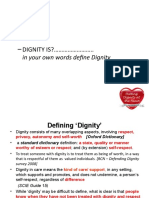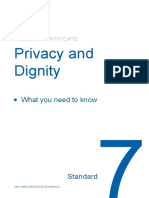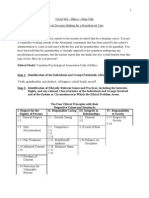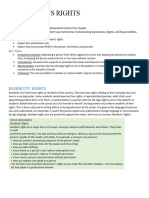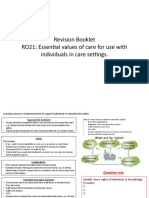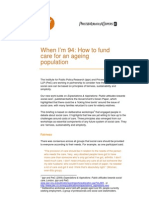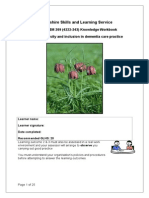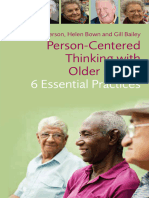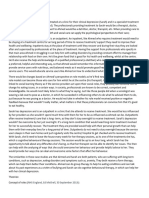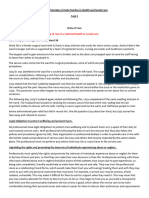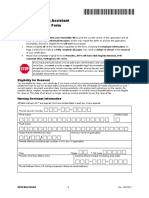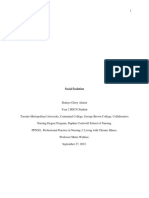0% found this document useful (0 votes)
55 views8 pagesUnit 2 - 5 Values
The document discusses five key health and social care values: confidentiality, dignity, respect for the individual, safeguarding and duty of care, and a person-centered approach to care delivery. Examples are provided for each value and how they are implemented. Maintaining confidentiality, treating people with dignity, showing respect, protecting people from harm, and focusing on individual needs are explored as important principles in healthcare.
Uploaded by
zxko24Copyright
© © All Rights Reserved
We take content rights seriously. If you suspect this is your content, claim it here.
Available Formats
Download as DOCX, PDF, TXT or read online on Scribd
0% found this document useful (0 votes)
55 views8 pagesUnit 2 - 5 Values
The document discusses five key health and social care values: confidentiality, dignity, respect for the individual, safeguarding and duty of care, and a person-centered approach to care delivery. Examples are provided for each value and how they are implemented. Maintaining confidentiality, treating people with dignity, showing respect, protecting people from harm, and focusing on individual needs are explored as important principles in healthcare.
Uploaded by
zxko24Copyright
© © All Rights Reserved
We take content rights seriously. If you suspect this is your content, claim it here.
Available Formats
Download as DOCX, PDF, TXT or read online on Scribd
/ 8
